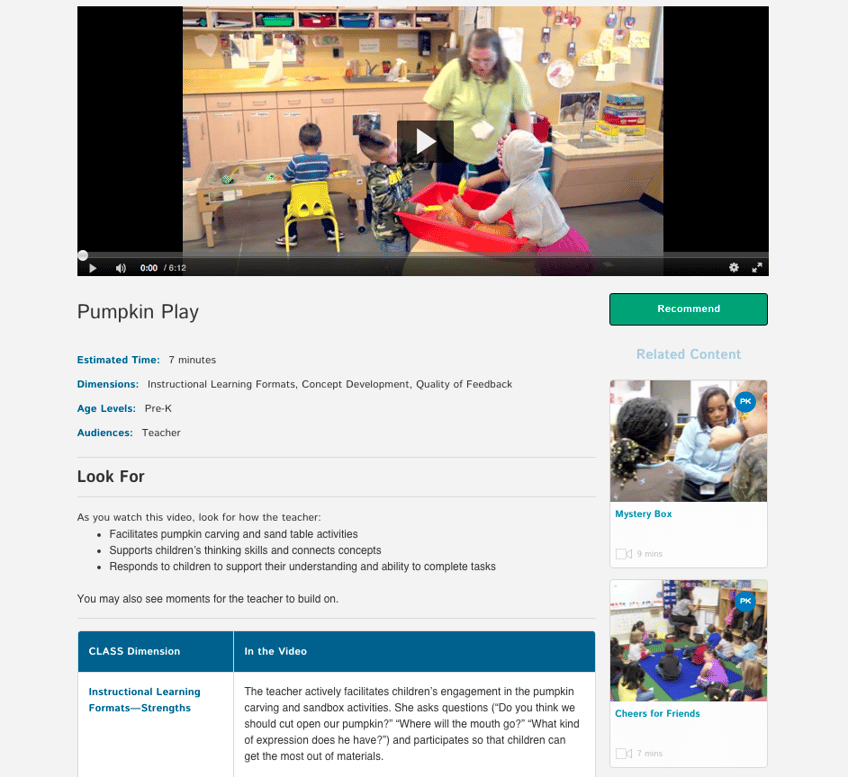
Long before my time developing online professional development for teachers, in my first year of teaching middle school, I received a gift I would never get again. My principal gave me one day and three rules:
- Don’t work.
- Watch other teachers.
- And learn.
After working with a substitute to get my class rolling, I spent the rest of that day observing veteran teachers. Much of what I learned helped me improve the way I taught in the coming weeks. But the gift was much more than a chance to make these small changes. The real gift was an expanded sense of possibility and new energy to improve.
I saw my future self in veteran teachers. And because I was not the only young teacher observing from class to class, I saw that my team was on a journey to improve their interactions along with me. The three simple rules were both motivation to improve and a method to do so.
But these rules are hard to follow. We break them even as we try to improve, not because we lack determination, but because they are in many ways unrealistic. Still, they’re rules we should abide by, and online PD can help us follow through even when we don’t have a sub in our room.
Why We Break the Rules
- Don’t Work: We can’t just turn kids away in the morning: “Sorry, parents. We’re taking a day off from working to learn.” And the little time we have away from kids, we spend planning, prepping, cleaning, etc. Who can blame us?
- Watch Other Teachers: We tend to teach while other teachers are also teaching. Even when we’re in the same room as other teachers, we rarely have an opportunity to stop interacting and observe. And when we do, we tend (justifiably) to observe students rather than teachers.
- Learn: This rule is about what you do once you stop working. How tired are you at the end of the workday? During your lunch break? Do you even get a real lunch break? When we get precious time away from work, who has the energy to devote hours upon hours to absorb what we’ve observed throughout the day?
Why We Should Follow Them
- Don’t Work: Time away from work is essential for learning. We’re just not wired to learn as we work. We need space to ask questions, take in new information, consider new approaches, and reflect.
- Watch Other Teachers: We learn from each other. It’s hard to stay focused on your learning goals if you’re constantly moving, doing, teaching. But when you take a step back and observe your peers as they teach, you honor the importance of your professional growth.
- Learn: We aren’t different from children in that we learn even when we don’t set out to do so. But when we are able to make learning our primary goal, we can focus our attention in ways that make us more likely to improve our practice.
How Online PD Can Help
- Don’t Work: With so little time away from work, online professional development courses can help us make the most of every minute. Resources are available whenever, wherever, and however often we want them. Take myTeachstone, for example. If you want a minute-long example of Quality of Feedback, it’s got it. Want two minutes of Language Modeling during lunch? Click play. Want to talk through how to better notice children’s cues with your co-teacher? Watch away, and talk it out.
- Watch Other Teachers: Online PD is a kind of magical hall with doors upon doors, each of which leads into a classroom. Don’t know where to go? Let the system help you find classrooms that you’ll be especially interested in. Not sure what to focus on? Use the guidance provided on each resource page (see an example in the picture below) to help you think and talk about what you see. These short but frequent visits to other classrooms can sustain a culture that is geared towards improvement. The children we serve deserve nothing less.

- Learn: Whether you’re choosing resources for yourself or following the recommendation of a mentor or coach, online PD can bring together information about your teaching, resources to facilitate learning, and the voices of other early childhood education professionals. This powerful combination, no longer relegated to infrequent PD events, can focus our attention on personalized learning goals and support our continued improvement. And this personalization assures us that when we give up our rare time away from work to focus on improvement, our time is well spent.
I spent years breaking these rules. We all do. And while that doesn’t mean we aren’t improving, it might mean that we aren’t improving as much as we’d like to. Online PD is built to help us follow these rules and get better every day. So next time you have a few precious minutes, wherever you are, take a break from work and step into another teacher’s classroom.

